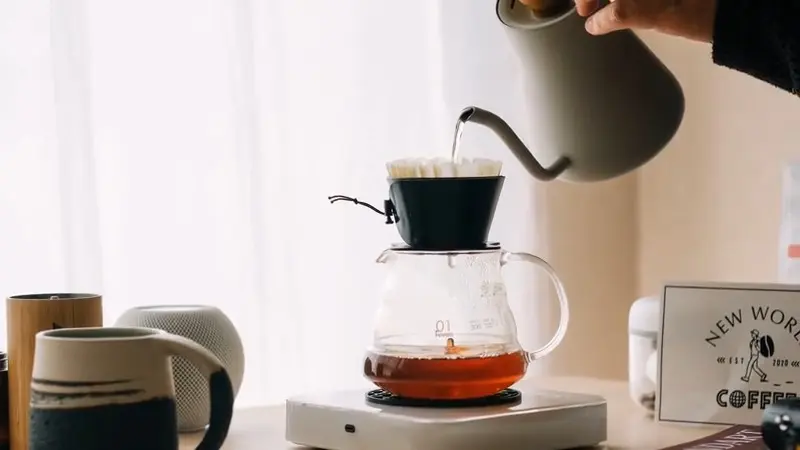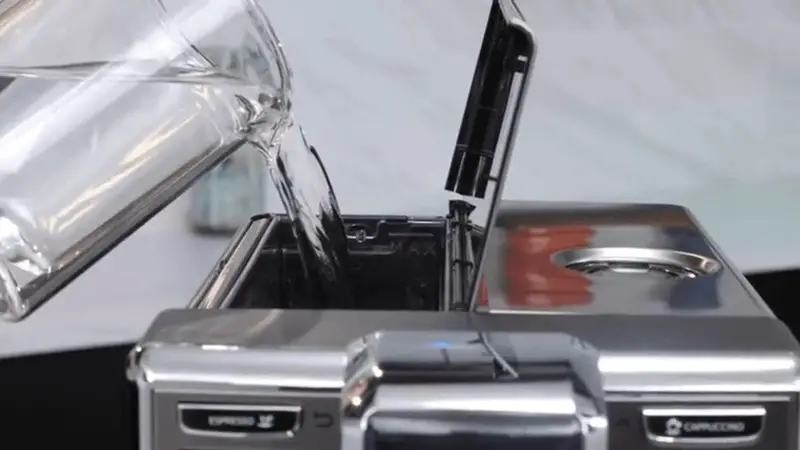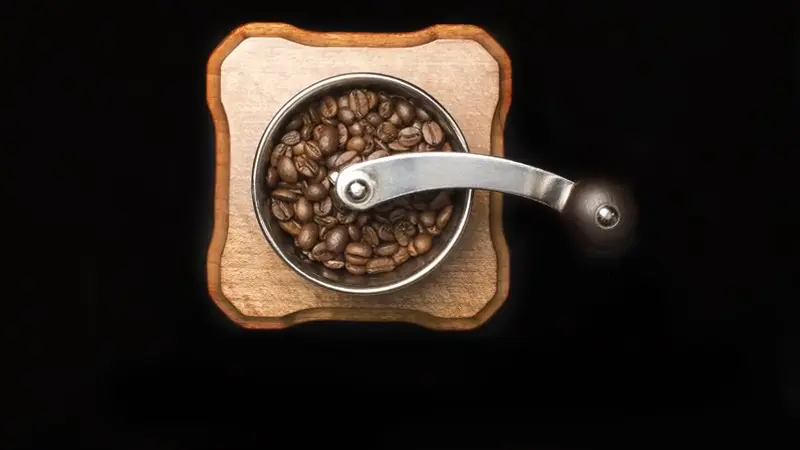Finding the perfect cup of coffee can transform your morning, setting a positive tone for the day ahead. Whether you’re a seasoned home barista or just starting your coffee journey, mastering a few essential techniques can elevate your brew from ordinary to extraordinary.
Immediate Answer
- Choose high-quality beans: Preferably single-origin Arabica.
- Grind fresh: Match the grind size to your brewing method.
- Use filtered water: Maintain an optimal temperature of 195-205°F (90-96°C).
- Master your brew method: Tailor techniques for pour-over, French press, or espresso.
- Store beans properly: Use airtight containers in a cool, dark place.
Follow-Up Questions
- How do different beans affect the flavor of my coffee?
- What’s the best way to grind coffee beans for various brewing methods?
- Why is water quality so important in coffee making?
- How do I perfect my coffee brewing technique?
- What’s the best way to store coffee beans?
Understanding Your Beans
Types of Coffee Beans
Understanding the different types of coffee beans is essential for any coffee enthusiast. Coffee beans fall into two main categories:
Arabica (Coffea Arabica):
- Flavor Profile: Known for their smooth and complex flavors, often with hints of fruits, sugars, and a slight acidity.
- Growing Conditions: Typically grown at higher altitudes, these beans thrive in cooler climates with plenty of rainfall.
- Common Regions: Ethiopia, Colombia, and Central America.
Robusta (Coffea Canephora):
- Flavor Profile: Offers a stronger, more bitter taste, with a somewhat grainy or nutty quality. These beans have higher caffeine content.
- Growing Conditions: Can be grown at lower altitudes and is more resilient to pests and harsh weather.
- Common Regions: Vietnam, Brazil, and Africa.
- Single-Origin vs. Blends
- Single-Origin Beans:
- Definition: Beans sourced from one specific region or farm.
- Flavor: Unique flavors that reflect the terroir (geography, climate, and soil) of the place they are grown.
- Recommendation: Ideal for those who want to explore distinct flavor profiles and nuances.
- Blends:
- Definition: A mix of beans from various regions.
- Flavor: Designed to create a balanced and consistent flavor, often used in commercial brands.
- Recommendation: Suitable for everyday drinking and for those who prefer a uniform taste.
- What are the main differences between Arabica and Robusta beans?
- Arabica beans are generally smoother and more complex, while Robusta beans are stronger and more bitter with higher caffeine.
- Why should I try single-origin beans?
- Single-origin beans allow you to taste the unique characteristics of a specific region, offering a more sophisticated and varied coffee experience.
- Are blends inferior to single-origin beans?
- Not necessarily. Blends are crafted to achieve consistency and balance, making them a good option for those who prefer reliable taste profiles.
- How can I determine the best bean for my taste preferences?
- Experiment with both Arabica and Robusta, as well as single-origin and blended beans, to discover the flavors that most appeal to you.

How to Repair a Sage Coffee Machine
The Grind
Importance of Grind Size
Grind size is crucial to coffee extraction, and here’s why:
- Espresso: Finer grinds are perfect for espresso. Why? Because they offer a rich and intense flavor.
- French Press: Coarser grinds are best for a French press. They allow for a full-bodied brew.
Why Should I Adjust the Grind Size?
Adjusting the grind size helps control how your coffee tastes. Here’s how:
- Too Fine? You might end up with bitter coffee.
- Too Coarse? Your coffee could taste weak and watery.
Tips for Beginners
- Start Simple: Begin with a medium grind if you’re unsure. It’s versatile and works for drip coffee makers.
- Experiment: Try different grind sizes to see what you like best.
- Listen to Experts: “The correct grind size ensures that you get the most out of your coffee beans without bitterness,” advises Scott Rao, a veteran in the coffee industry.
Remember, finding your perfect grind size is a fun journey that makes your coffee taste just right!
Water Matters
Quality and Temperature
To brew the perfect cup of coffee, paying attention to the quality and temperature of your water is crucial. Here’s how to get it right:
Quality:
- Filter It: Always use fresh, filtered water to avoid any unwanted flavors that can ruin your coffee. Impurities in tap water can alter the taste significantly.
- Why Filtered? Filtered water ensures that only the pure essence of your coffee grounds makes it into your cup, leading to a cleaner, more enjoyable flavor profile.
Temperature:
- Ideal Range: The best water temperature for brewing coffee is between 195-205°F (90-96°C). This range allows for optimal extraction, ensuring a balanced and flavorful cup.
- How to Achieve This: Use a thermometer to measure your water, or bring it to a boil and let it sit for about 30 seconds before using.
Pro Tip:
“Water quality can make or break your coffee. Always use filtered water for the best results,” recommends a home brew enthusiast.
FAQs:
- Why does water temperature matter? The temperature affects the extraction process, impacting the taste and strength of your coffee.
- Can I use bottled water? Yes, but make sure it’s not distilled. Bottled spring water is a good alternative if you don’t have a filter.
- What if my water is too hot or too cold? Too hot can over-extract, making your coffee bitter. Too cold can under-extract, leading to a weak and sour taste.
By following these guidelines, you’ll ensure every cup of coffee you brew is delicious and satisfying. Happy brewing!

Mastering Your Brew Method
Pour-Over
Equipment Needed: Dripper, filter, kettle.
Instructions:
- Use a 1:16 coffee-to-water ratio.
- Pour water in a circular motion for even saturation.
- Experiment with pour rates and patterns for varied flavors.
French Press
Instructions:
- Use a 1:15 coffee-to-water ratio.
- Steep for 4 minutes.
- Plunge gently to avoid disturbing the grounds.
Espresso
Instructions:
- Grind beans finely.
- Tamp evenly for consistent extraction.
- Aim for a 25-30 second shot for optimal flavor.
Storage Tips
To preserve freshness, store coffee beans in an airtight container in a cool, dark place. Avoid freezing or refrigerating them, as moisture and temperature fluctuations can degrade their quality.
“Proper storage extends the life of your beans, keeping your coffee tasting fresh and vibrant,” says Scott Rao.
Coffee Maker Cleaning for a Tastier Daily Brew
Experimentation
Encourage experimentation with different beans, grind sizes, and brewing methods. Discovering your perfect combination can make every cup a joyous experience.
“Experimenting with coffee is like a journey. Every step brings new flavors and satisfaction,” shares a home brew enthusiast.
Experimenting with Your Kettle
Trying out different types of kettles can significantly affect your coffee brewing experience. Not only does the type of kettle influence the ease of pouring, but it also impacts the precision and temperature stability of your coffee.
Types of Kettles:
- Gooseneck Kettle:
- Pros: Excellent for pour-over methods due to its precise pour control.
- Cons: More expensive than regular kettles.
- Electric Kettle with Temperature Control:
- Pros: Allows you to set and maintain the ideal water temperature.
- Cons: Requires a power source and is less portable.
- Stovetop Kettle:
- Pros: Simple and durable. Suitable for all manual brewing methods.
- Cons: Less precise temperature control.
Tips for Using Your Kettle:
- Consistency is Key: Use the same kettle regularly to get used to its pour rate.
- Control the Flow: For gooseneck kettles, practice pouring slowly and steadily.
- Monitor Temperature: Always ensure your water is within the ideal range (195-205°F / 90-96°C).
- Clean Regularly: To avoid imparting off-flavors, clean your kettle regularly, especially if you use it for more than just boiling water for coffee.
By experimenting with different kettles and techniques, you’ll find the equipment that fits your brewing style best, enhancing your overall coffee experience.

Troubleshooting Guide
Common Problems and Solutions
Ensuring a perfect cup of coffee can sometimes be challenging. Here are some common issues and their solutions:
Bitter Taste
Cause: Over-extraction due to too fine a grind size, too hot water, or brewing for too long.
Solution:
- Adjust Grind Size: Use a coarser grind.
- Check Water Temperature: Ensure water temperature is within 195-205°F (90-96°C).
- Shorten Brew Time: Reduce the brewing time according to your method.
Weak Coffee
Cause: Under-extraction due to a too-coarse grind size, not enough coffee, or too short brewing time.
Solution:
- Adjust Grind Size: Use a finer grind.
- Increase Coffee Amount: Use more coffee grounds.
- Extend Brew Time: Increase brewing time within the method’s guidelines.
Sour Taste
Cause: Under-extraction due to water temperature being too low or too coarse a grind size.
Solution:
- Check Water Temperature: Ensure it is within 195-205°F (90-96°C).
- Adjust Grind Size: Use a finer grind to improve extraction.
Grainy or Sludgy Texture
Cause: Grinder issues leading to inconsistent grind size or improper filtration.
Solution:
- Check Grinder: Ensure your grinder produces a consistent size.
- Improve Filtration: Use quality filters or check the mesh of your French press.
Bland Flavor
Cause: Stale beans or improper storage.
Solution:
- Use Fresh Beans: Always use freshly roasted beans.
- Proper Storage: Store beans in an airtight container in a cool, dark place.
By identifying and addressing these common issues, you can refine your brewing process and enjoy consistently delicious coffee.
Comparative Tables
Kettles Comparison
| Feature | Gooseneck Kettle | Electric Kettle with Temperature Control | Stovetop Kettle |
|---|---|---|---|
| Precision | High precision for pour-over methods | Variable precision depending on the model | Moderate precision |
| Temperature Control | Manual, requires a thermometer | Automatic and precise | Manual, requires monitoring |
| Ease of Use | Requires practice to pour accurately | Easy to use with preset temperatures | Simple to use but requires close attention to temperature |
| Portability | Depends on model; generally less portable | Less portable due to power requirements | Highly portable |
| Price | Generally more expensive | Varies, usually higher due to advanced features | Generally more affordable |
| Maintenance | Requires regular cleaning to avoid scale build-up and preserve pour quality | Requires regular cleaning to avoid mineral deposits | Easy to clean, durable |
Grinders Comparison
| Feature | Blade Grinder | Burr Grinder | Manual Grinder |
|---|---|---|---|
| Grind Consistency | Inconsistent | Consistent | Consistent depending on effort |
| Price | Affordable | More expensive | Varies, generally affordable |
| Ease of Use | Simple to operate | Easy to use with consistent results | Requires manual effort |
| Grind Settings | Limited or none | Multiple, from coarse to fine | Varies by model |
| Durability | Less durable due to blade wear over time | Highly durable due to robust construction | Durable, fewer moving parts |
| Noise Level | Noisy | Quieter | Quiet |
Conclusion
By understanding the importance of beans, grind size, water quality, and brewing techniques, you can significantly enhance your morning coffee experience. With the right knowledge and a willingness to experiment, every coffee lover can craft a consistently great morning brew.
—
Integrating these expert tips into your coffee routine can make a world of difference, transforming your mornings one cup at a time.

I’m J.S., I created and am the content manager at DIYHouseSkills.com. I do the research and write the articles that appear on this website. I’ve learned many household skills during my life and think it’s important to at least know the basics so that you can save yourself time and money… READ FULL BIO >

